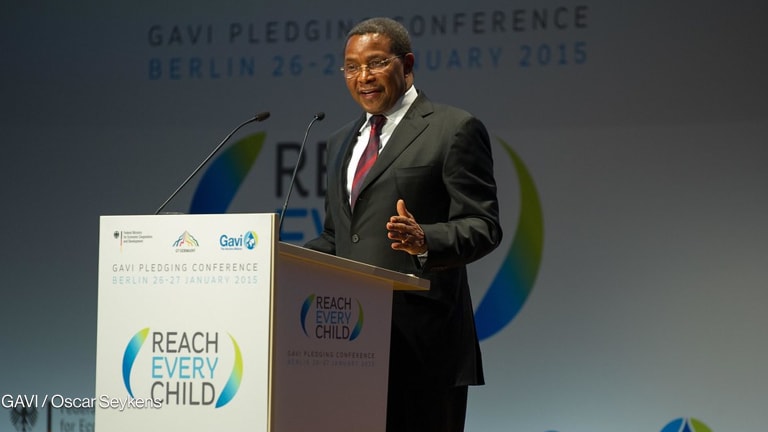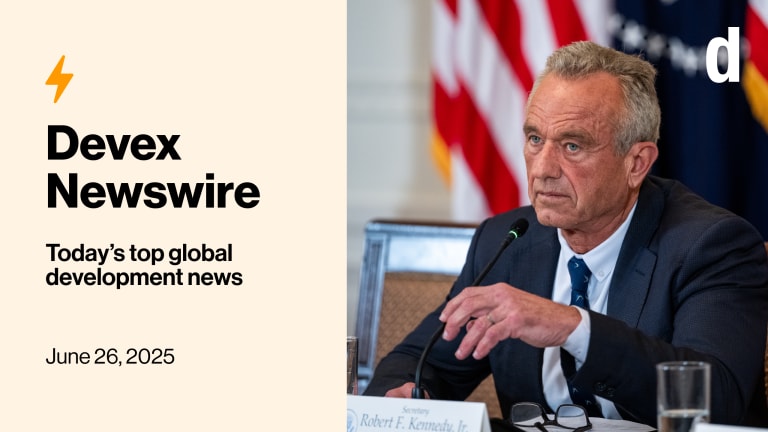
After months of intense advocacy toward governments around the world, the 2015 replenishment conference for Gavi, the Vaccine Alliance has culminated in a resounding success: World leaders met, and even slightly exceeded, Gavi’s funding ask of $7.5 billion for the next five years of its work.
Gavi is an international organization working to expand access to childhood vaccines in the world’s poorest countries. So, what will this new funding get us?
Gavi has estimated that the contribution will support countries to vaccinate 300 million additional children from 2016 to 2020, preventing up to 6 million deaths.
Most donors — including Norway, Canada, the United Kingdom, the United States and the European Commission — increased their contributions to Gavi to help meet this goal, and should be commended for their ambition and vision.
National budgets are stretched and global health can often seem like an easy cut, but the leaders who stepped up have shown that they can look beyond immediate national interests — and that they are committed to investing in a healthy future for the world’s poorest children.
Take the example of Kenya. Just this year, Kenya launched the new rotavirus vaccine, which will avert more than 5,000 deaths from diarrhea among Kenyan infants. Before the vaccine roll out, 40 percent of all hospital admissions in the country were children under the age of 5 suffering from diarrhea. The new vaccine will go a long way to bring these unacceptable numbers down, and clear overstretched hospital wards of children dying from this preventable illness.
We are also hopeful that this strong support for vaccines will translate into broader and continued commitment to maternal and child health in general, particularly as the global financial commitments to maternal, neonatal and child health under the 2010 G-8 Muskoka Initiative will run out this year and will need to be renewed.
The Gavi replenishment is the start of this momentum, not just for international governments, but also for the organization itself to work more closely with communities to ensure vaccines are delivered to the world’s poorest children.
Its goal is to reach every child with vaccines, and Gavi has made equity a centerpiece of its 2016-2020 strategy. But to ensure equity and sustainability are firmly cemented as the cornerstone of its efforts to reach every child with vaccines, Gavi must also prioritize working with communities and involve civil society organizations.
Remote communities often have little access to information about the importance of immunization and how to make sure that children are vaccinated against preventable diseases. Community organizations are therefore essential to creating the buy-in, ownership and demand from communities for immunization, so that we can reach every last child.
CSOs also work toward improving the planning, management and performance of equitable health systems’ policies and immunization programs. Since 2011, national CSO platforms have been established in 14 countries with 128 CSOs actively engaging in national health sector planning and policy processes.
In Kenya, for example, improved capacity within the CSO platform has led to closer collaboration with the Division of Vaccines and Immunization to discuss immunization issues and provide input on government decision making.
In a difficult economic context, CSOs advocate to ensure domestic and foreign aid budgets are dedicated to immunization. And once commitments are made, CSOs play a watchdog role to guarantee commitments made at national and international levels are delivered.
See more stories on Gavi, the Vaccine Alliance:
● Gavi replenishment 2015: 5 key issues
● A new breed of vaccine champions
● Yes we can: $7.5B Gavi goal reached in Berlin
● China makes first aid commitment to Gavi
The Action for Global Health network, for example, tracks official development assistance for health budgets in key European donors and has developed an ODA health tracker to compare actual development assistance for health from governments to their official ODA commitments to gain a more accurate picture of EU donor performance.
In addition, ACTION — an international partnership of advocacy organizations from the global north and south — has developed a scorecard that keeps track of the 17 pledges to Gavi by traditional aid donors. Now that lifesaving resources have been pledged, those funds must be delivered on time, and must reach those most in need.
On Jan. 30, ACTION released an update to its scorecard to analyze donor commitments and payments to Gavi. It’s clear that the hard work has only just started, but for today, we can be grateful to the world leaders who stepped up and made their ambitious pledges.
These pledges are an act of true global solidarity with the world’s poorest children, paving the way for them to live healthier futures that will contribute to the wellbeing of their communities and countries.
Join Devex to network with peers, discover talent and forge new partnerships in international development — it’s free. Then sign up for the Devex Impact newsletter to receive cutting-edge news and analysis at the intersection of business and development.









